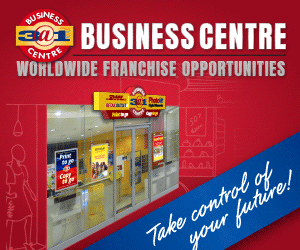If you want to ensure long-term success, you need to keep growing. And getting this right is all about spotting the growth opportunities your competitors have missed and generating ideas that allow you to differentiate yourself in the market.
Coming up with great ideas often starts with gathering insights into unmet customer or consumer needs and the problems people are trying to solve. Growth ideas vary from big, bold changes to your business model and product offering, to small tweaks that can set you apart from the pack.
Ideas are the lifeblood of a healthy business, so keep an open mind about every new idea you generate. Sometimes, all it takes is a small change for an idea to develop into a viable business proposition.
What do you need to do to turn those ambitious ideas into growth opportunities for your business?
Market research and strategies for growth opportunities
Ideas don’t come out of thin air. Start with some market research. This will help you understand what your competitors are doing right and wrong, what your customers truly value, and what your customers want from companies like yours that they are not getting.
Here are some ideas to get started:
• Look at competitors’ websites and social media interactions. What do they offer that you don’t? What are their strengths and weaknesses? What do people say about them?
• Run a simple survey on SurveyMonkey or Microsoft Forms. Ask customers for feedback about your products and services. Use these insights into your strengths and weaknesses to find opportunities for change and innovation.
• Read the local and international trade and business media to stay up to date with industry trends.
Now that you have done the research, you can look at applying your insights to four different growth strategies:
Market penetration
Increasing market penetration is about selling more of your existing products or services to more people in your existing markets. This is a lower risk strategy than some of the others but beware of investing in this approach to growth if your market is reaching saturation or if demand for your product could fall due to new alternatives. Think about how Netflix killed the DVD market.
Market development
Market development involves selling your existing products to new markets. This approach is higher risk than market penetration because it may involve some investment in market expansion without any guarantee of profitable returns. This strategy uses existing products, so there are no associated product development costs and helps mitigate risk.
Product or service innovation
Introducing a new product or service may require a substantial investment of time and money in product development, training sales and service staff, and marketing. By focusing on existing customers, you can spend some time learning more about these customers to establish the most effective offering.
Diversification
Diversification is perhaps the riskiest growth strategy because it means developing new markets with new products. This means you might have no experience with the product or with the customers that are likely to purchase it. However, this strategy can give you an important first mover advantage if you have identified a market opportunity before anyone else.
Data, people and finances
When you’ve chosen your approach, make sure you base your business decisions on solid data. This will help increase your chances of success. Also ensure you have the right team in place to make your growth strategy come to life. You might need extra funding to pay for the new products, services and markets you want to develop, so ensure your finances are in a good place and keep an eye on your cash flow.
Always remember that it doesn’t matter whether you’re considering superfast growth or looking to take things slower and steadier; the same thinking and planning still applies.




